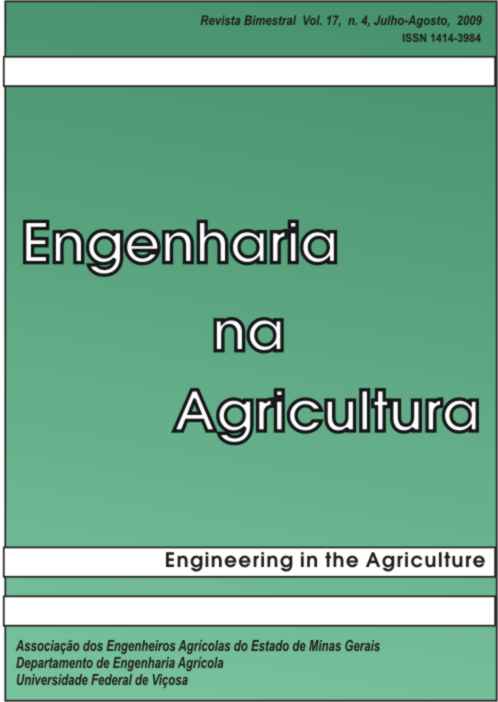DISTRIBUTION AND UNCERTAINTY OF ERODIBILITY OF A HUMIC RED YELLOW OXISOL UNDER ‘ARABICA’ COFFEE CULTIVATION
DOI:
https://doi.org/10.13083/reveng.v17i4.24Abstract
The objective of this work was to study the spatial behavior of erodibility of a humic Red Yellow Oxisol through distribution maps and uncertainty using kriging methods. The experiment was set in an area cultivated to Coffea arabica L. cv catuai. The soil was collected from 0 to 0.20 m depth, from 50 points distributed in a sampling grid. Initially, the soil erodibility was evaluated with the use of indirect models based on soil particle fractions and organic matter content. Data were initially subjected to a descriptive and exploratory analysis. Geoestatistic analysis was used on the set of real data and also on the erodibility data after codification by indication. Results were interpolated by ordinary and indicative kriging to make maps of distribution and uncertainties. The mean erodibility value was higher than tolerated for Oxisol soils, and in the major portion of the area, probability of finding erodibility values greater than 50%, was high at the higher land elevations.Downloads
Downloads
Published
How to Cite
Issue
Section
License
Authors who publish with this journal agree to the following terms:
The author(s) authorize(s) the publication of the text in the journal;
The author(s) ensure(s) that the contribution is original and unpublished and that it is not in the process of evaluation by another journal;
The journal is not responsible for the views, ideas and concepts presented in articles, and these are the sole responsibility of the author(s);
The publishers reserve the right to make textual adjustments and adapt texts to meet with publication standards.
From submission, the author is fully conceding the paper's patrimonial rights to the publication, but retaining the owner of its moral rights (authorship and paper's identification) according to Creative Commons Attribution-Noncommercial.








 Licensed by
Licensed by 